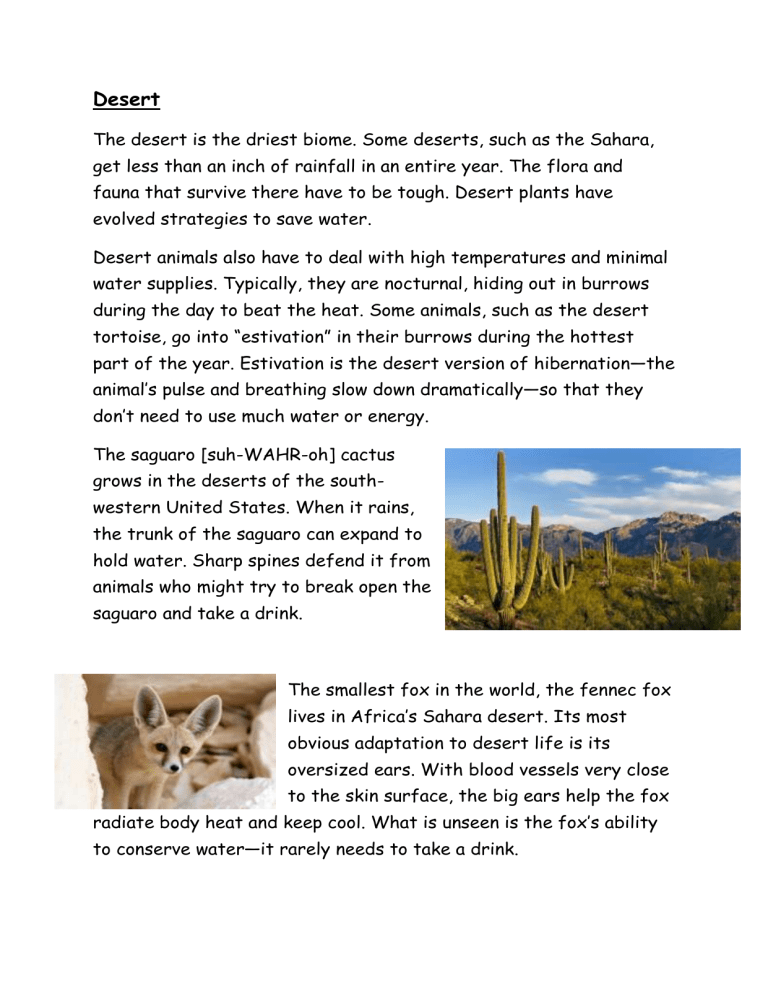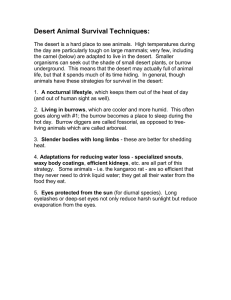
Desert The desert is the driest biome. Some deserts, such as the Sahara, get less than an inch of rainfall in an entire year. The flora and fauna that survive there have to be tough. Desert plants have evolved strategies to save water. Desert animals also have to deal with high temperatures and minimal water supplies. Typically, they are nocturnal, hiding out in burrows during the day to beat the heat. Some animals, such as the desert tortoise, go into “estivation” in their burrows during the hottest part of the year. Estivation is the desert version of hibernation—the animal’s pulse and breathing slow down dramatically—so that they don’t need to use much water or energy. The saguaro [suh-WAHR-oh] cactus grows in the deserts of the southwestern United States. When it rains, the trunk of the saguaro can expand to hold water. Sharp spines defend it from animals who might try to break open the saguaro and take a drink. The smallest fox in the world, the fennec fox lives in Africa’s Sahara desert. Its most obvious adaptation to desert life is its oversized ears. With blood vessels very close to the skin surface, the big ears help the fox radiate body heat and keep cool. What is unseen is the fox’s ability to conserve water—it rarely needs to take a drink. Chameleons are famous for their ability to change color and blend in with their surroundings. The Namaqua chameleon of southwestern Africa is no exception. However, unlike other chameleons that live in trees, this desert-dwelling species digs burrows in the sand to make its home. The Namaqua chameleon uses its long, sticky tongue to nab insects and scorpions. Desert-adapted dromedaries (onehumped camels) were domesticated thousands of years ago. People ride them, drink their milk, and even race them. Camels can travel for 100 miles across the desert without water, and they can easily handle temperatures of 110 degrees Fahrenheit, This one is hanging out on a beach next to Dubai, waiting to take tourists for a ride.





